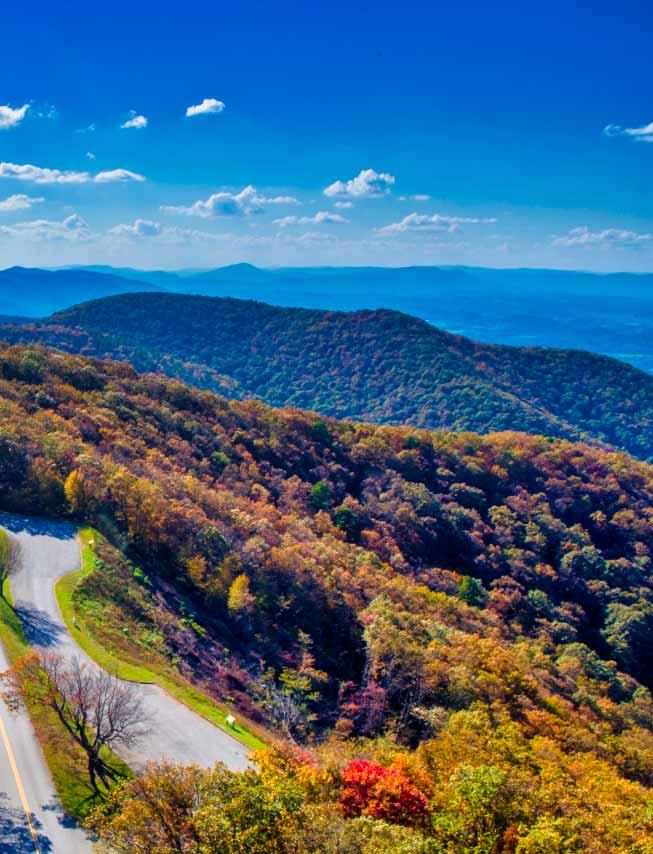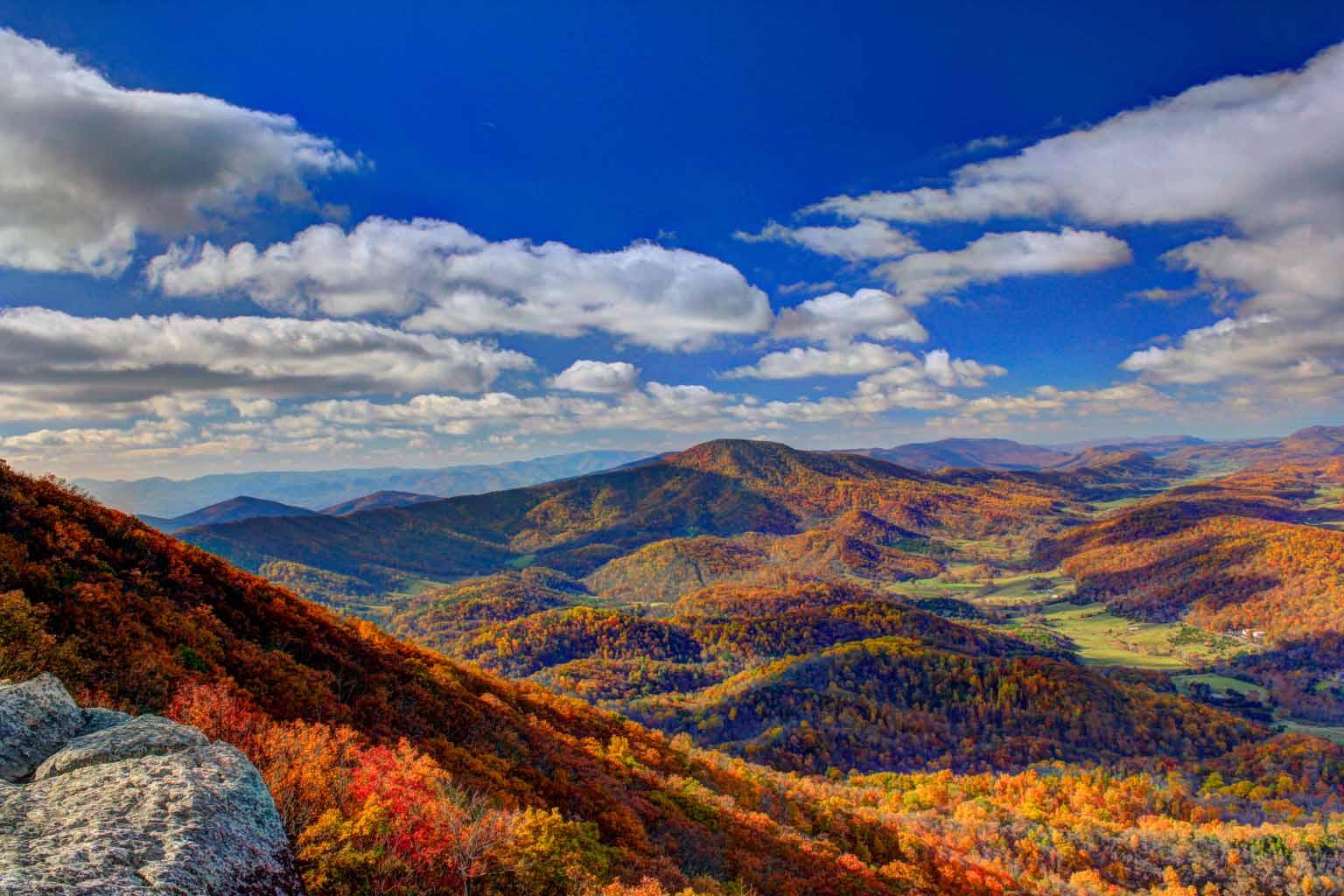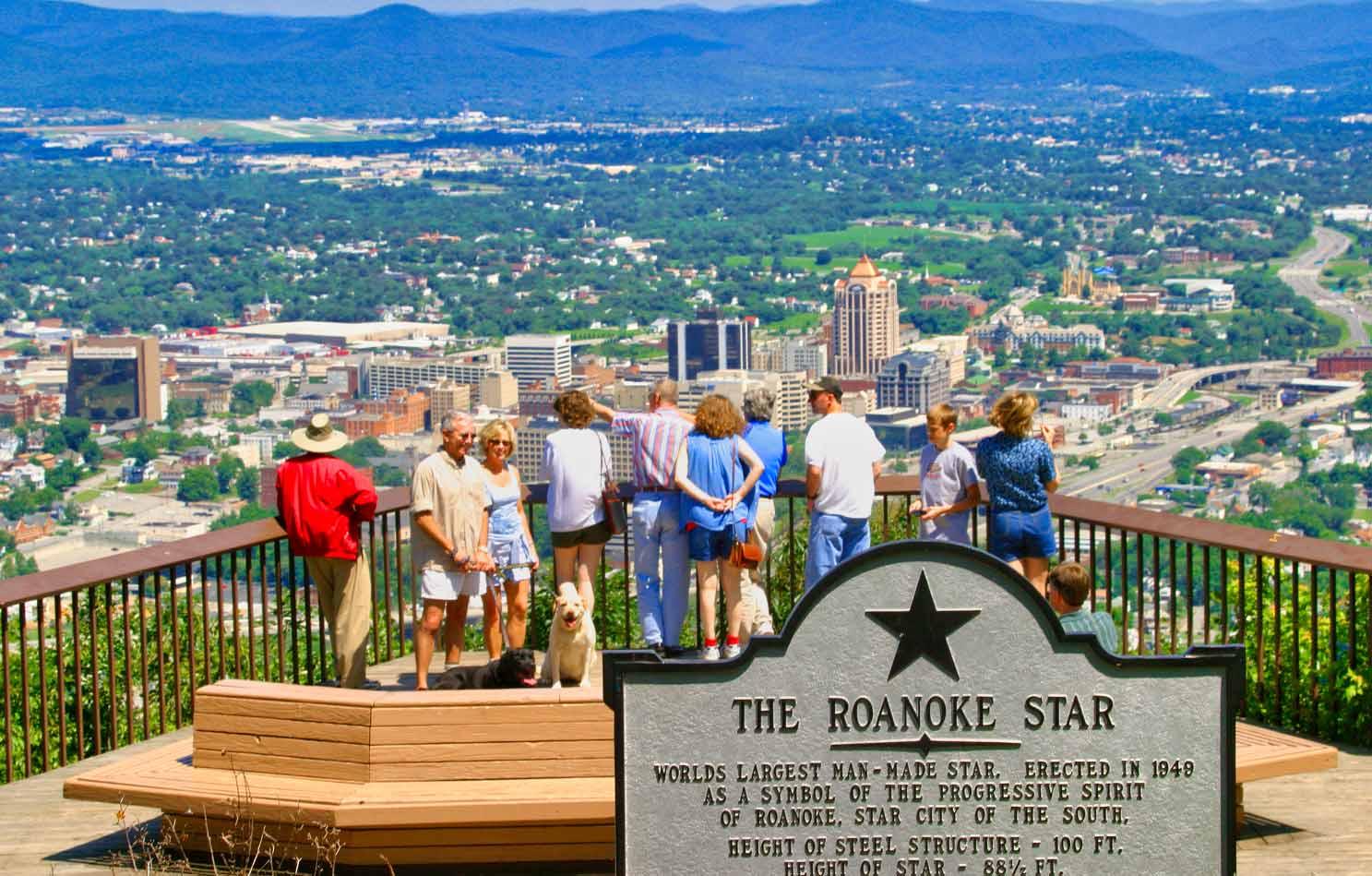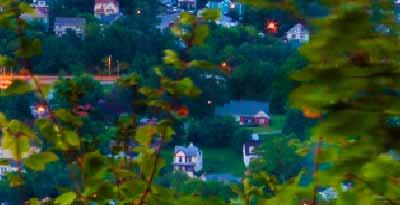
6 minute read
The Roanoke Valley & Virginia’s Blue Ridge
Blue Ridge Parkway Aerial View. Photo courtesy Star City SkyCams & Visit Virginia’s Blue Ridge.





Located within a day’s drive of half the nation's population, the Roanoke Valley in Virginia’s Blue Ridge is situated on Interstate 81 in the heart of Virginia’s mountains. Roanoke is approximately 251 miles south of Washington, DC, and 216 miles west of Colonial Williamsburg.
History
European settlers first discovered the Roanoke Valley over three centuries ago. However, the history of the region stretches back thousands of years to geological events that created this vast expanse of ridges and valleys and left alternating limestone and salt deposits in an area that would later come to be known as “Big Lick”.
Virginia’s Blue Ridge, like most of the early frontier, was not for the fainthearted. The salt marshes that once made the valley a fertile hunting ground were also the cause of countless deaths.
Militias were a necessity against frequent Native American and British raids. General Andrew Lewis, who distinguished himself in the Battle of Point Pleasant in 1774, purchased land in then-Botetourt County (later formed into Roanoke County) that eventually encompassed the present limits of the City of Salem.
The City of Roanoke had less auspicious beginnings, although it soon became the busiest commercial center west of Richmond. Once a rough, tawdry outpost along the Wilderness and Great Roads, it was never more than a bumble collection of hamlets, including Gainesborough and Big Lick, until Frederick J. Kimball brought the railroad to town in 1881.
The 19th century was the Age of the Iron Horse. Several railroad companies, including the Virginia & Tennessee, the Atlantic, Mississippi & Ohio and the Shenandoah Valley Railroad, were established in this area around the time of the Civil War.
Several Philadelphia financiers, led by Kimball, realized there was money to be made with the discovery of bituminous coal in West Virginia.
When some enterprising locals got wind of the plan, it took a Paul Revere-esque midnight ride to Lexington, VA with a satchel containing $10,000 to convince the railroad executives to establish the junction in Roanoke.
The grateful locals almost renamed Big Lick after Kimball, President of the newly formed Norfolk & Western Railway, but he instead urged them to rename their city in honor of the river that runs through the valley. The name comes from a Native American word, “rawrenock,” which refers to white shell beads used to trade. Thus, Roanoke was born.
In 1974, Norfolk & Western merged with Southern
Railway, becoming Norfolk Southern, and moved its headquarters to Atlanta. As a result, the economic future of the Roanoke Valley was left in doubt.
Over the past three decades, however, the region has emerged as a center for healthcare, banking, shopping and tourism.
The Roanoke Star
Indians wandering between the parallel ridges of the Allegheny Mountains named their great valley, Shenandoah, “daughter of the stars”. Here, nestled in this beautiful valley, is the progressive-spirited “Star City of the South” — Roanoke.
And, visible from just about every part of this city is the splendidly illuminated, 100-foot-tall Roanoke Star.
Blue Ridge Parkway
The Blue Ridge Parkway makes its way through the heart of Virginia’s Blue Ridge Mountains. At 469 miles, this scenic drive winds along the Blue Ridge Mountains and offers visitors the opportunity to enjoy some of the best mountain views in the world.
The Parkway is operated by the National Park Service and is the most visited unit in the National Park System.
Blue Ridge Parkway Information Center. Photo courtesy Virginia’s Blue Ridge.


Travelers can take the Parkway north out of the Roanoke Valley and make their way to Shenandoah National Park and Skyline Drive or south toward Great Smoky Mountains National Park and Grandfather Mountain in North Carolina.
In addition to the Blue Ridge Parkway, the region is also home to Smith Mountain Lake — the “Jewel of the Blue Ridge”, and fouramazing Virginia State Parks.

View from the Roanoke Star. Photo courtesy Jeff Greenberg & Virginia’s Blue Ridge..
Roanoke Skyline and the Blue Ridge Mountains. Photo courtesy Darryle Arnold & Virginia’s Blue Ridge.


Living History
History is alive and well through fascinating museums and major historical sites that let you walk in the footsteps of soldiers, explorers and statesmen.
You can find out how the railroad was instrumental in the development of the region at the Virginia Museum of Transportation.
Walk through the spot where one of the nation’s founding fathers used to retreat at Thomas Jefferson’s Poplar Forest.
Discover the AfricanAmerican influence on the region and the entire country at the Booker T. Washington National Monument and Harrison Museum of African American Culture.
Understand how major Civil War battles in Virginia’s Blue Ridge Mountains affected the outcome of the war.
See what industries had a major impact on the growth of the Roanoke Valley at the History Museum of Western Virginia and the Salem Museum.
Here you can also learn the story of the brave men who gave their lives during the Allied invasion of Normandy during World War II at the National D-Day Memorial.


Virginia Museum of Transportation. Photo courtesy Bruce Henderson & Virginia’s Blue Ridge.
Click for Video


Outdoor Adventure
The majestic mountains provide a scenic backdrop for all the outdoor adventures in the Roanoke Valley in Virginia’s Blue Ridge.
But to fully enjoy your experience ofover 1,000 miles of trails inVirginia’s Blue Ridge Mountains, you’ve got to put on some sturdy shoes and hike, bike, climb, and paddle among them.
The Roanoke Valley was named one of the ten most bike-friendly areas in the United States by USA Today Travel.
Roanoke is the largest city on the Appalachian Trail, and the local trioof Dragon’s Tooth, McAfee Knob, and Tinker Cliffs has become collectively known as the Triple Crown of Virginia, showcasing three of the most beautiful summits of the Appalachian Trail.
At approximately 2,200 miles in length, the Appalachian Trail, is revered among outdoor enthusiasts as a challenging and breathtaking path that provides one of the most unique nature experiences on earth.
The northern trailhead is at Mount Katahdin in Maine while the southern trailhead is at Springer Mountain in Georgia.
Less than an hour from Roanoke by way of the Blue Ridge Parkway are the Peaks of Otter, among the 7 Natural Wonders of Virginia’s Blue Ridge.
The Peaks of Otter are Sharp Top, Flat Top, and Harkening Hill. At 3,875 feet in elevation, Sharp Top was long believed to be the tallest mountain in Virginia, but in fact, Sharp Top isn’t even the highest of the three Peaks. Flat Top holds that title at 4,004 feet. Harkening Hill rises to 3,375 feet. The highest mountain in Virginia is Mount Rogers at 5,728 feet.
For more on the Roanoke Valley and Virginia’s Blue Ridge, visit: https://www.visitroanokeva.com


Mountain Bikers. Photo courtesy Sam Dean Photography & Virginia’s Blue Ridge.







